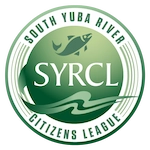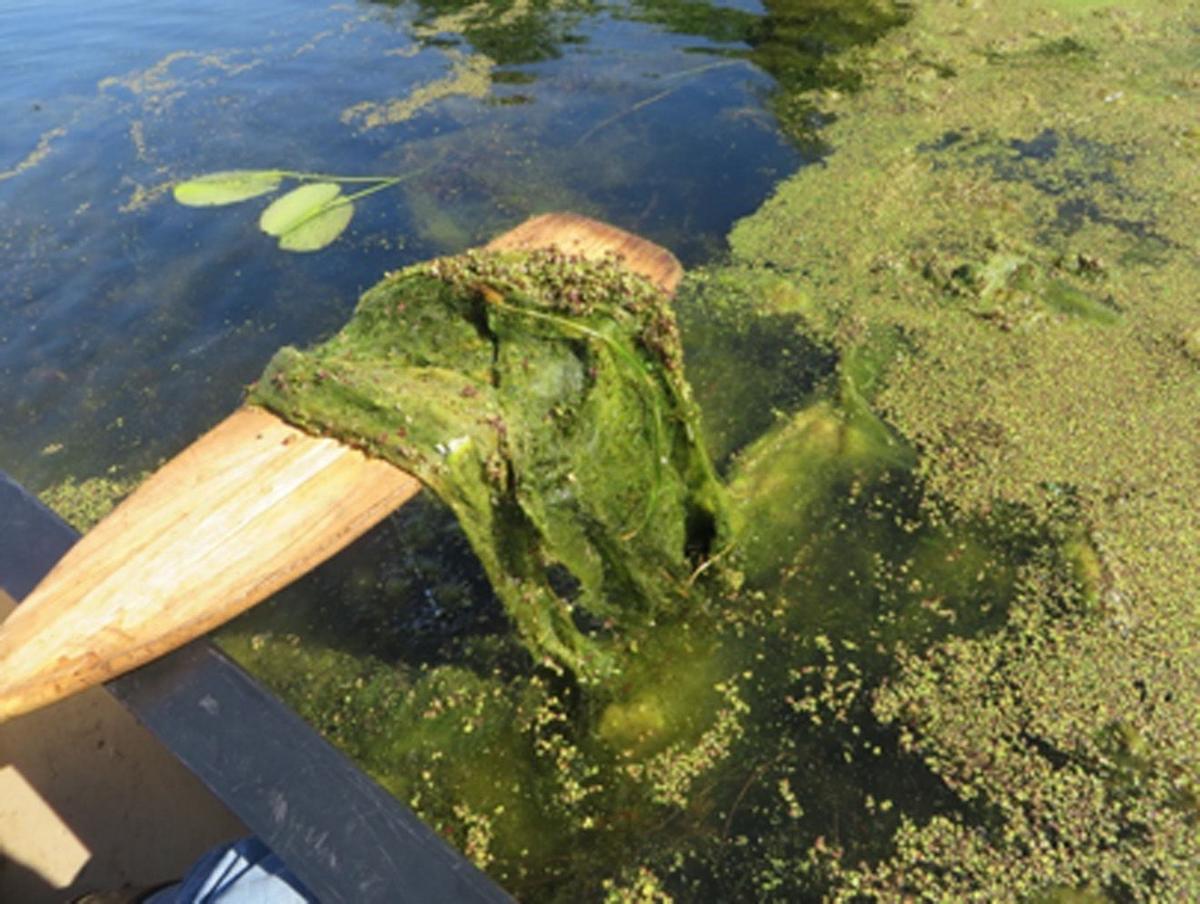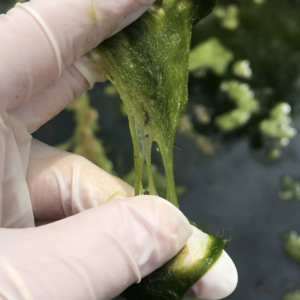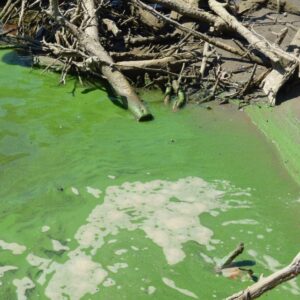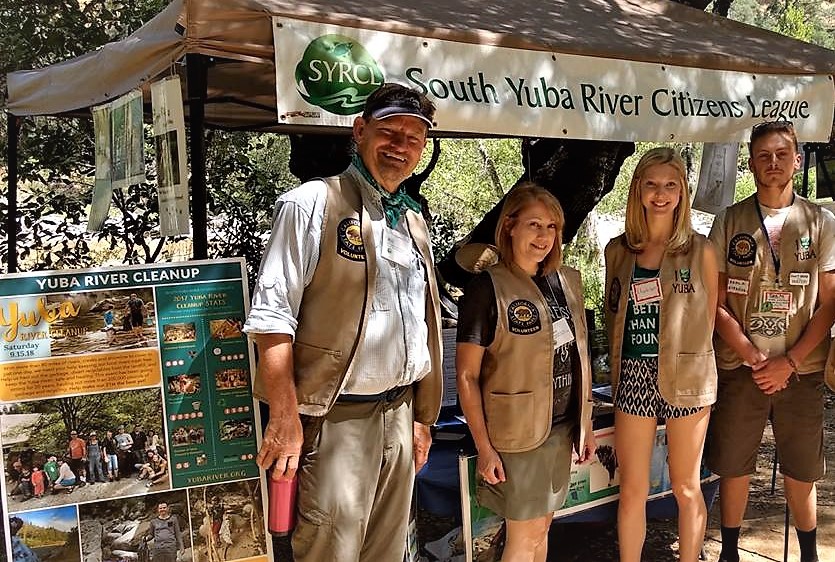Algae: The Good & the Bad in the Yuba
We have fielded a lot of questions in the past few weeks about water flows and water temperatures in the South Yuba. In particular, people are asking questions like: How do flows compare to years prior? Are temperatures higher than normal?
River Flows
Flows on the 4th of July were the 4th lowest at Jones Bar in the past 63 years. The graph below shows data collected on Independence Day since 1959.
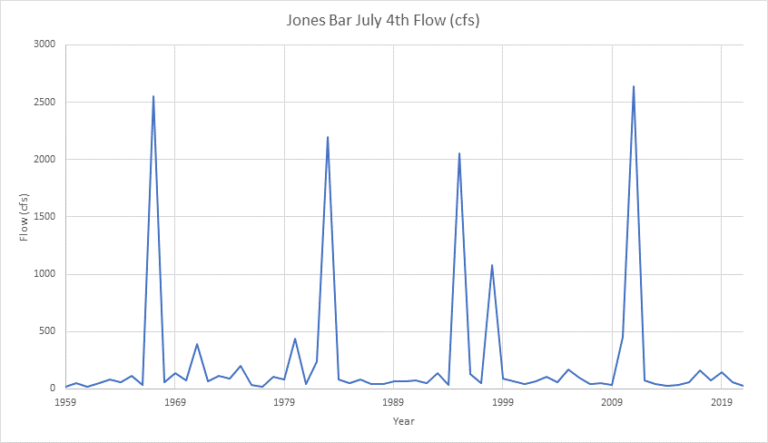
River Temperatures
According to our water quality monitoring data, which goes back to 2000, water temperatures at many of our favorite river crossings—Lang’s, Edwards, Purdon, Highway 49, and Bridgeport—are about average for this time of year. Our highest June recorded water temperature at these crossings was 26.43 degrees Celsius back on June 8th of 2013.
At these temperatures, we do see algae growing in the Yuba. Below we talk about different kinds of algae and how to identify whether or not they are harmful.
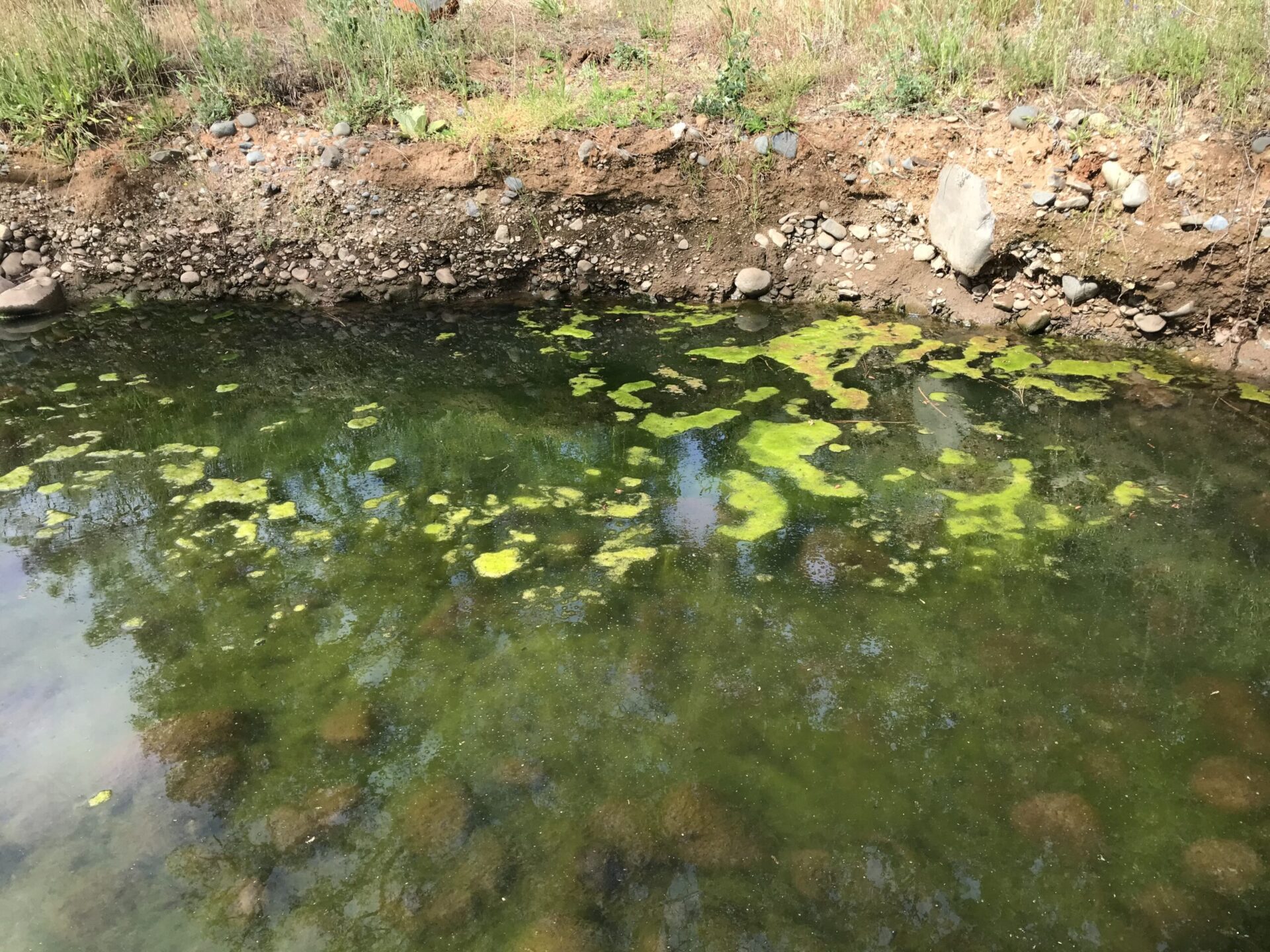
The Good
Algae have been around for millions of years and play several important roles in our watershed. Algae boost primary productivity in the water, are a main source of food for aquatic organisms, and are essential for nitrogen cycling on earth.
The Bad
- There are, however, toxic forms of algae that can create harmful algal blooms or HABs. Cyanobacteria, or blue green algae, are photosynthetic bacteria containing microcystins, or poisonous toxins, that are especially harmful to humans and animals.
- Cyanobacteria have buoyancy regulation, meaning they can float to the surface of water to get light, and sink back down to the bottom of the river to get nutrients. These algal blooms often appear as mats on both the surface and on the floor of a river.
What causes these blooms?
An excess of nutrients in the water, such as phosphorus and nitrogen, can cause denser HABs. Air temperature and sunlight exacerbate cyanobacteria, but they are not drivers of it.
How to Distinguish Good Algae from Bad Algae
Luckily, there are 2 simple tricks to help distinguish the good algae from the bad: The Stick and Jar Tests. Note that while these tests do give a good indication of the type of algae in the water, they are not 100% perfect. We encourage anyone who comes in contact with HABs to call your doctor.
NOTE: We would like to remind the public that healthy algae is important to the ecosystems of the Yuba River watershed. We encourage visitors to protect the environment and take care to not interfere with “good” algae.
The Stick Test
STEP 1: Locate the algae built-up in the river. Is it floating on the surface? If so, grab a sturdy stick, throw some gloves on, thrust the stick into the surface mat of the algae, and slowly pull some out of the water (make sure that it does not come in contact with your skin). Next, observe the algae that you pulled out of the water.
STEP 2: If the algae pulls apart like hair or is filamentous, it is most likely a non-toxic algal bloom. On the other hand, if the stick comes out of the water like it has been thrust into a can of paint, the algae is likely to be a form of toxic, blue-green algae (Photo 2).
The Jar Test
STEP 1: For this test you will need a clear mason jar with a lid and a plastic bag. First, observe the algal mat and collect a sample of water just below the surface of the river. Make sure NOT to sample at the surface to avoid scum. Fill the jar 3/4 of the way full, screw the lid on the jar, place the jar in a plastic bag and refrigerate overnight.
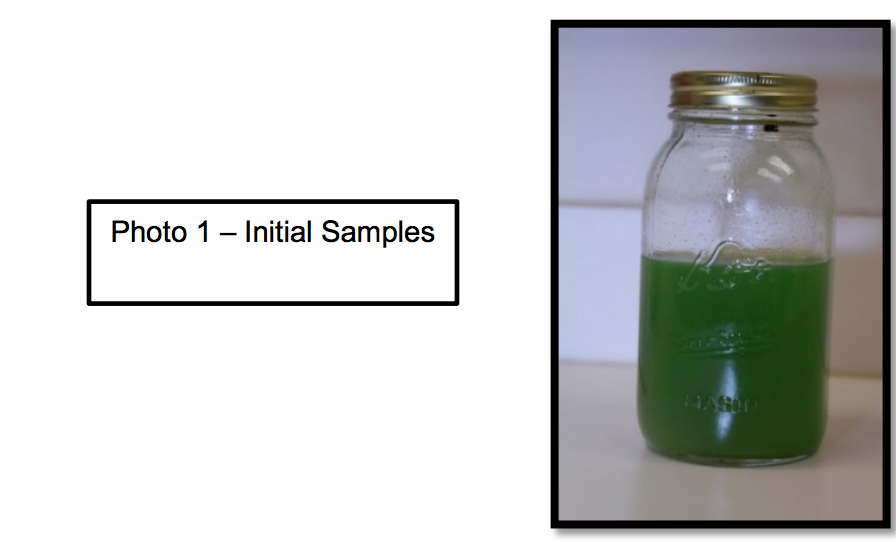
STEP 2: The next day, remove the jar from the refrigerator and see where the algae has accumulated (make sure not to agitate the jar as you carry it out of the fridge).
STEP 3: If the algae have settled on the bottom of the jar (below), you most likely have a non-toxic form of algae.
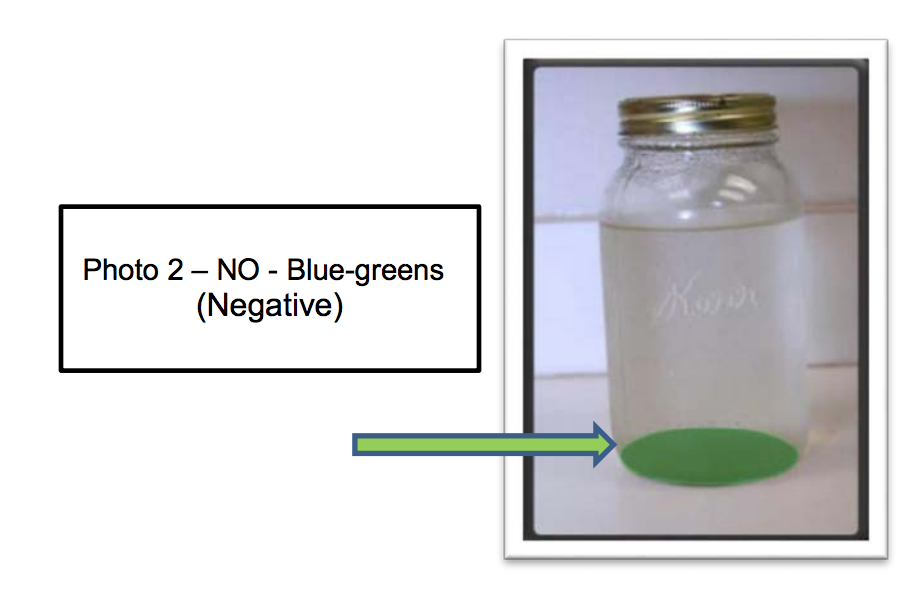
If the algae have formed a ring around the top of the jar (below), there is a strong possibility that blue-green algae is present.
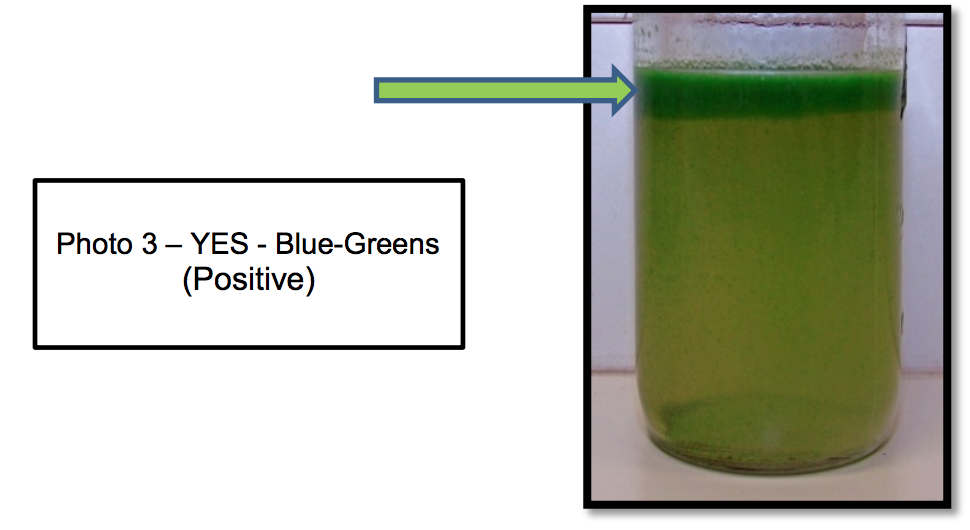
Harm to Humans and Animals
If you see algal mats, do not recreate, drink, ingest, or boil the water. If you have been exposed to a body of water with HABs present and are experiencing symptoms, call your doctor immediately. Human symptoms can take a variety of forms (flu-like, respiratory, and dermal, such as skin irritation, mouth blisters or GI effects). It also is important to note that animals are attracted to cyanobacteria. After swimming in water with HABs, they can experience symptoms, such as vomiting, jaundice, and lethargy.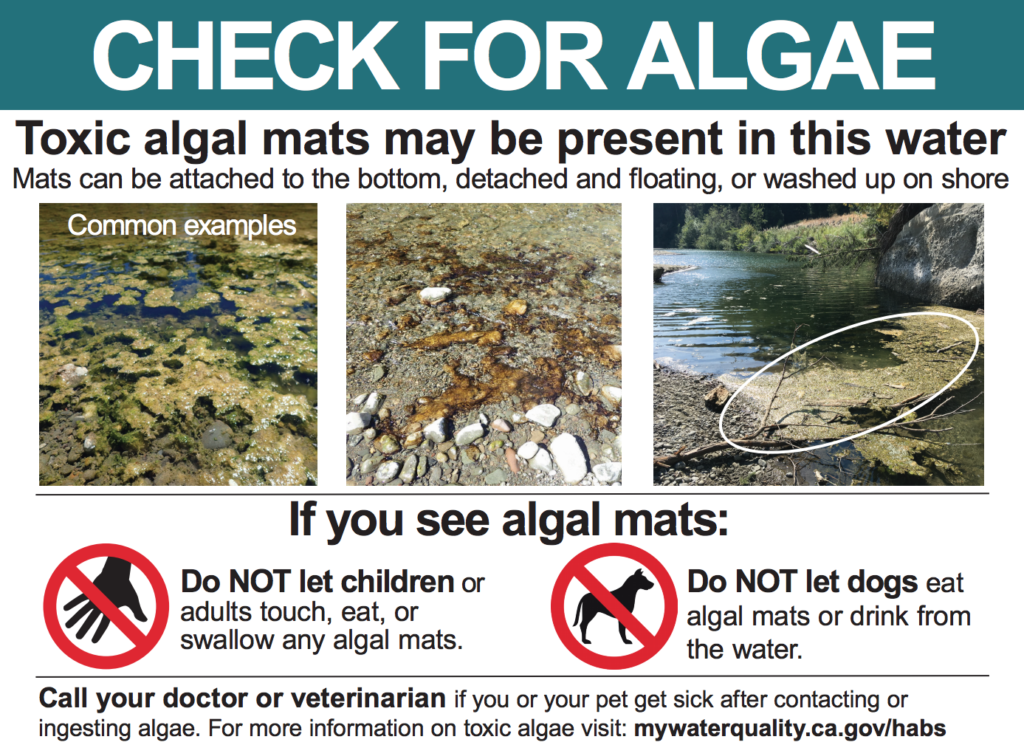
For more information on HABs, click here. If you have information regarding a suspected or confirmed algal bloom OR any related human or animal illnesses, contact the State Water Board immediately and fill out this form.
Email: CyanoHAB.Reports@waterboards.ca.gov; Phone: 1-844-729-6466
Did you enjoy this post?
Get new SYRCL articles delivered to your inbox by subscribing to our ENews.
